What's Happening Here?
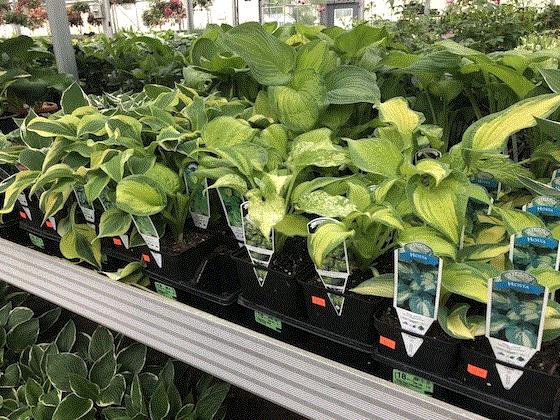
During a recent trip to a reputable garden center, my eyes were drawn to this tray of hostas. Can you see what I see? If not, take a closer look, think about it for a while and enjoy the upcoming articles before I have the great reveal.
ICE Raid Leads to Arrests
This is the type of news I usually prefer not to cover in the newsletter. However, I thought it was relevant, so here it is.

Photo: AP
From my understanding, over 200 law enforcement workers aided U.S immigration agents as they raided two Corso's Flower and Garden Center (aka Corso's Perennials) locations in Northern Ohio Tuesday morning. Over 100 arrests were made in one of the largest employer stings in recent history. The Corso's have not been arrested, but obviously, are under investigation.
This news is a real eye-opener for our industry, which relies heavily on migrant workers. Believe me, this type of immigration crackdown could happen again. Is there anything you can do to prevent this from happening to your business? I've never been in human resources per se and by no means am I an immigration expert. The only suggestions I have is that you take steps to verify your workers' documents (check and recheck them) and be sure you're up to date with your immigration compliance.
Click here to learn more about the raid at Corso's Perennials.

Panicum Purple Tears
Photo courtesy of Hoffman Nursery.
Panicum virgatum Purple Tears is a tough and adaptable ornamental grass that has all the attributes to become a staple in the landscape. Purple Tears has a narrow, upright habit and grows a very manageable 4-ft. tall. It has light green foliage and produces lots of gray-tipped flower spikes that develop into attractive, showy purple seed heads. Once established, this Zone 4 grass is drought tolerant.
Hoffman Nursery is the first nursery in the U.S. to offer this new switchgrass from renowned plantsman and designer Piet Oudolf. Be sure to give Panicum Purple Tears a try.
Nematodes Are Hot, But ...
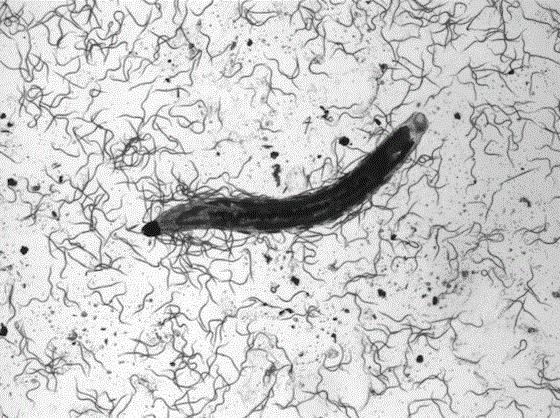
Beneficial nematode beginning to enter a fungus gnat larvae. Photo: BASF
Beneficial nematodes (Steinernema feltiae) are very popular tools many growers use for controlling fungus gnats and Western flower thrips. I see nematodes being used to control these pests more and more, this is why I say they're hot. However, did you know that they don't like the heat? Temperatures above 88F kills them.
In the back of my mind (and perhaps yours) I've known this, but it didn’t hit home with me until recently. This week, I attended a BASF-sponsored meeting in Nashville, Tennessee, and Jeff Gabric, Senior Sales Specialist BASF Professional & Specialty Solutions, mentioned this fact during his nematode presentation.
That's when it hit me: There are times of the year and geographic locations when the temperatures are around or above 88F. So what does this mean for growers? Are there times of the year when using nematodes aren't as effective as others? Here's my take ...
Nematodes are susceptible to high temperatures while applying them (namely the temperature of the water) and before they enter their host (fungus gnat larvae). Once the nematodes are inside the fungus gnat larvae, they're no longer susceptible to high temperatures.
If I were a grower, I'd consider using other strategies (traditional chemistries, IGRs, etc.) for controlling fungus gnats and thrips when the soil temperatures are or are expected to be in the mid 80s or warmer. If you decide to continue using beneficial nematodes when the temperatures are high, time your application to be the during the coolest time of the day. The air and soil temperatures are coolest in the early morning; temperatures may still be too warm in the evenings due to solar gain during the day.
I plan to cover this topic in more detail in an upcoming "Paul Talks Perennials" in the August issue of GrowerTalks magazine. In the meantime, here's a tech sheet from BASF I thought you'd find informative: Nemasys.

The Answer is ...
Earlier, I showed this image of a hosta display I saw at a garden center:
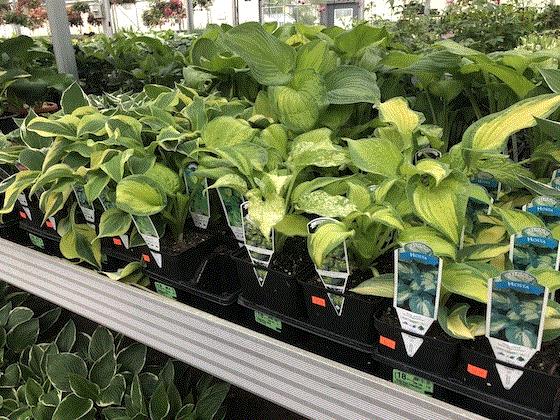
Are these symptoms of a disease or a stunning new hosta cultivar? I'm afraid that this isn't a new cultivar—these symptoms are occurring on Hosta Brother Stefan. This should have been an easy one for most of you, but don’t worry if you're still not sure what's causing this. Here's a closer look:
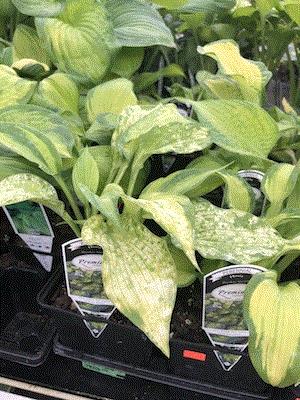
The symptoms on this hosta are caused by a virus, specifically Hosta Virus X (HVX). Congrats to those of you who nailed this. I'll have to come up with a harder one next time we play this game.
What Can Be Done?
HVX isn't a new problem, however, it's not as prevalent as it was nearly a decade ago. The appearance of the symptoms varies widely by cultivar and the color of foliage. The most common symptoms included mottled, light or dark green discolorations along leaf veins. It can also be expressed as green and yellow mottling of the leaf blades, puckering, circular discolored areas or twisted leaves.
HVX is a potyvirus and is NOT vectored by insects. It's transmitted from plant to plant by contact with infected sap. This most commonly occurs through mechanical activities, such as dividing or trimming.
Being transmitted on contaminated tools means good sanitation practices should be implemented when cutting or dividing hostas. The best practice, although not practical, is to disinfect the cutting tools between each plant. At the very least, disinfect the tools after trimming a small number of plants and certainly between cultivars.
Be sure to use disinfectants such as Virkon S, which is effective at killing numerous viruses. When disinfecting the tools, be sure to allow adequate contact time with the disinfectant. For best results, refer to and follow the recommendations of the disinfectant's label.
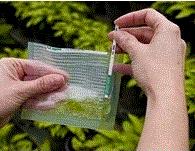
Symptomatic plant tissues can be sent to diagnostic laboratories for virus testing and identification. Agdia, Inc. has HVX ImmunoStrips available for practical and cost effective on-site testing. Click here for information about the HVX ImmunoStrips.
Unfortunately, there are no known controls for HVX. Once plants are diagnosed, infected plants should be removed promptly out of the growing area and destroyed.




Thanks for reading this edition of Perennial Pulse. Feel free to drop me a line from time to time to give me a status report or to let me know what challenges you're facing. Also, I'm always interested in learning what you'd like to read about in a future Perennial Pulse.
My email is ppilon@ballpublishing.com.
Best regards,
Paul Pilon
Editor-at-Large
Perennial Pulse
This email was received by you and over 33,613 subscribers!
If you're interested in advertising in Perennial Pulse, contact Kim Brown ASAP and she'll hook you up.